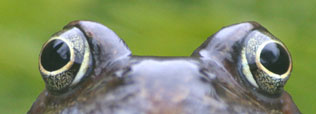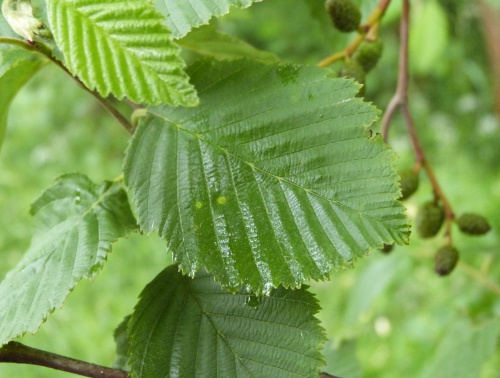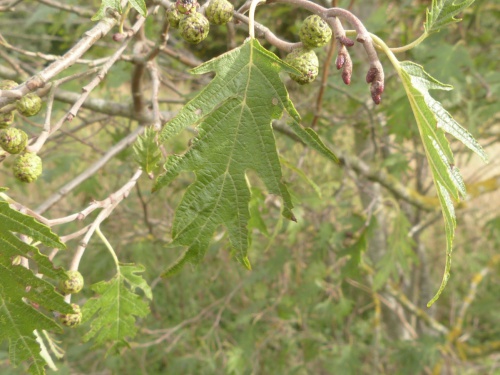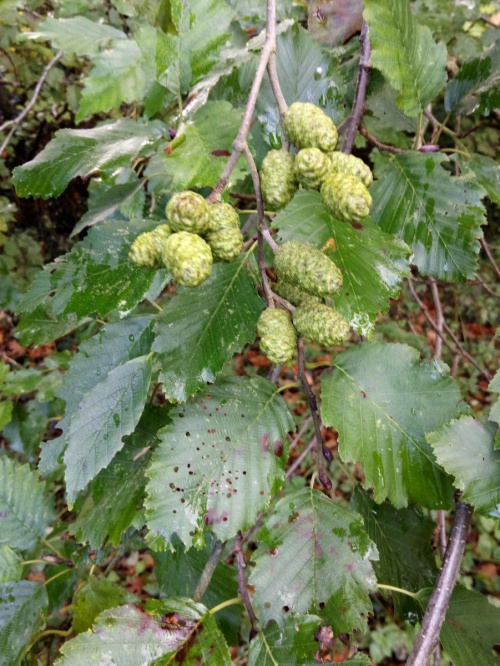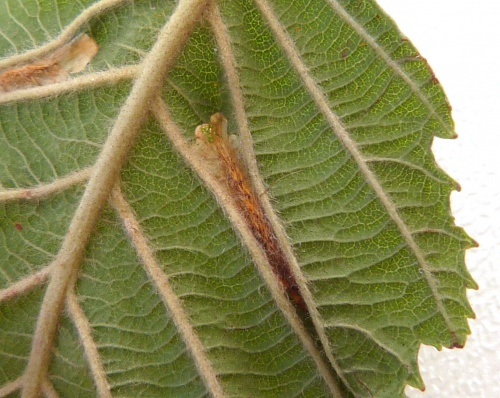Grey Alder - Alnus incana
Tree or shrub to 10 metres with smooth grey bark. Young shoots hairy. Leaves oval-lanceolate, pointed, downy and grey beneath. Fruits are cone-like.
Other Alder including our native Alnus glutinosa are very similar when not in leaf.
Smooth grey bark on mature trees can indicate this species, but it is best to record it from the leaf-shape. It is hard to distinguish this species form other alders from the buds, twigs, fruits, cones or catkins.
Photos of leaves
Often planted, especially on former quarries and tips or on restored brownfield or previously developed land .
Spring and summer.
Deciduous tree.
Widespread in Britain, usually as planted stock.
Occasional in Leicestershire and Rutland usually as a result of planting; but often naturalised. It was not recorded in the 1979 Flora survey of Leicestershire.
Leicestershire & Rutland Map
Enter a town or village to see local records
MAP KEY:
Yellow squares = NBN records (all known data)
Coloured circles = NatureSpot records: 2020+ | 2015-2019 | pre-2015
UK Map
Species profile
- Common names
- Grey Alder
- Species group:
- Trees, Shrubs & Climbers
- Kingdom:
- Plantae
- Order:
- Fagales
- Family:
- Betulaceae
- Records on NatureSpot:
- 28
- First record:
- 30/04/2007 (Dave Wood)
- Last record:
- 15/09/2023 (axon, kaye)
Total records by month
% of records within its species group
10km squares with records
The latest images and records displayed below include those awaiting verification checks so we cannot guarantee that every identification is correct. Once accepted, the record displays a green tick.
In the Latest Records section, click on the header to sort A-Z, and again to sort Z-A. Use the header boxes to filter the list.
Latest images
Latest records
Phyllonorycter strigulatella
Grey Alder Midget moth caterpillars feed on Grey Alder creating a puckered leafmine on the underside of the leaf. The mine is usually between two veins and has multiple fine creases.
